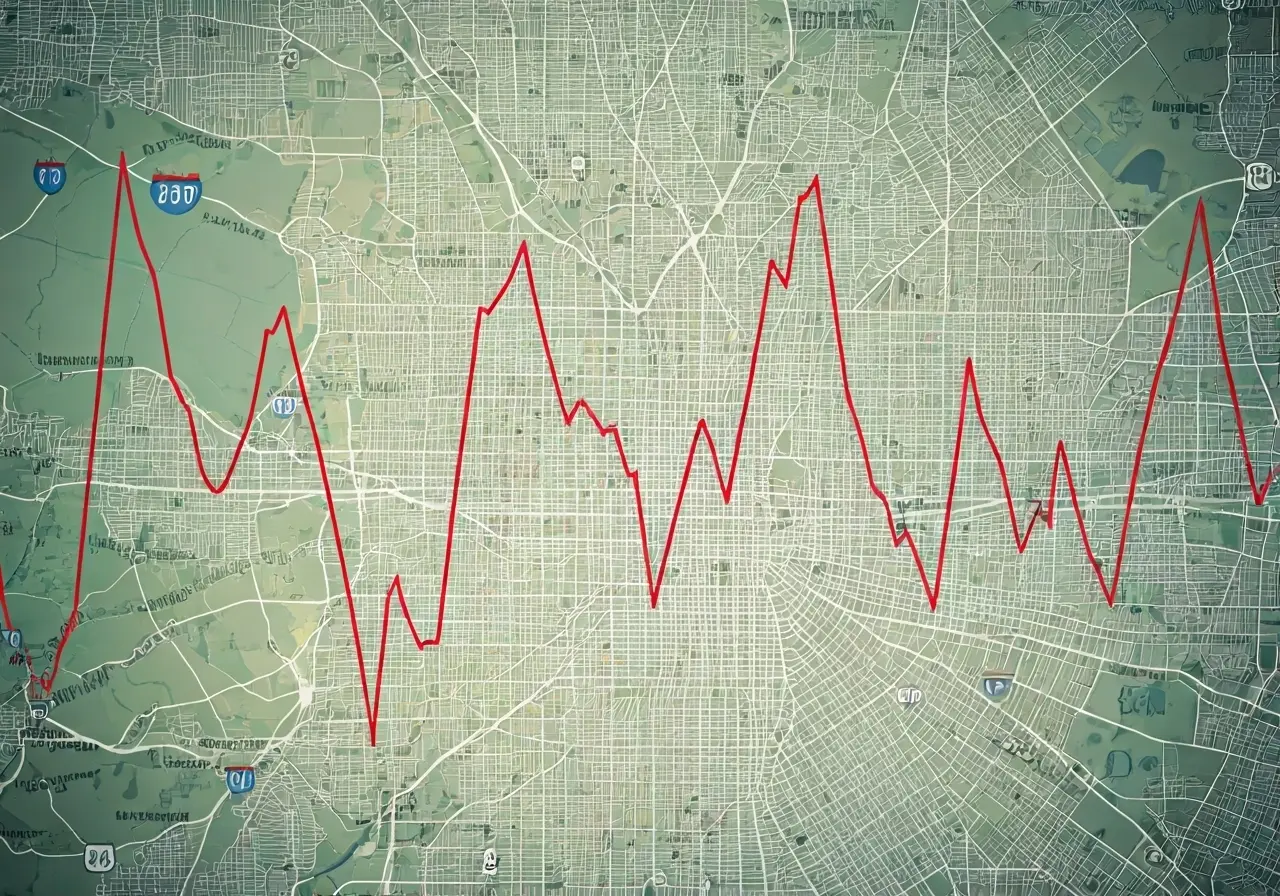Navigating the housing market in Washington D.C. can be a complex task, especially when interest rates are on the move. Fluctuations in interest rates not only impact buyers but can also significantly affect those looking to sell their homes. In this blog post, we’ll explore how these changes influence home sellers in Washington D.C. and provide some insights on how to navigate these fluctuations effectively.
Understanding Interest Rate Fluctuations
Interest rates in the housing market are influenced by a myriad of factors, including economic policies, inflation, and the Federal Reserve’s decisions. It’s essential to comprehend how these rates move and what drives them to anticipate their impact on the housing market. For instance, decisions made by the Federal Reserve often play a pivotal role in dictating changes in interest rates. When the Fed raises rates, borrowing becomes more expensive, potentially leading to a slowdown in home buying activity. Conversely, lower rates typically spur greater demand as borrowing costs decrease, making it more affordable for buyers to secure loans.
The D.C. housing market, known for its unique dynamics, exemplifies how these fluctuations can reverberate across all aspects of buying and selling. Understanding these nuances is crucial for sellers aiming to position their properties effectively. Sellers must stay informed about the broader economic picture while also considering local factors. For instance, the proximity to government institutions and a buoyant job market can sometimes buffer or amplify interest rate impacts in the area, making it vital for sellers to keep an eye on both national and local economic indicators.
The Direct Impact on Home Sellers
For home sellers, interest rate shifts can affect both the pool of potential buyers and the competitiveness of their property. An increase in interest rates can lead to higher mortgage costs, potentially reducing the number of buyers who can afford a home at a specific price point. As borrowing becomes more costly, prospective buyers might either lower their price range or delay purchasing altogether, impacting the volume of offers that sellers receive. This can lead to longer selling times and require more flexible pricing strategies.
Conversely, when interest rates decrease, the accessibility of mortgage loans generally improves, broadening the buyer pool. Sellers in such climates might experience quicker sales and more competitive bidding processes. Thus, understanding these dynamics can help sellers tailor their strategies. By being cognizant of both current rates and projections of their trajectory, sellers can better align their expectations with market realities, positioning themselves advantageously irrespective of the prevailing economic conditions.
Adjusting Pricing Strategies
Sellers may need to adjust their pricing strategies in response to interest rate changes. Understanding the market’s response to rate adjustments can help sellers set realistic and competitive prices, attracting more buyers despite fluctuations. In a rising interest rate environment, it might be beneficial for sellers to consider offering price incentives or contributing to closing costs to entice wary buyers. Conversely, during periods of low interest rates, sellers might leverage increased demand to bolster their asking prices without fearing the loss of potential buyer interest.
Moreover, pricing strategies aren’t just about the sticker price. Sellers could employ creative strategies such as value-added upgrades or improved staging to enhance the appeal of their home, potentially fetching higher offers. Expertise in crafting flexible pricing approaches often means the difference between staying stagnant or making a successful sale. Engaging real estate professionals with a keen understanding of market trends and lending conditions can be indispensable during such decisions.
Timing Your Home Sale
Timing can be everything in real estate. Sellers must consider both current interest rates and projections for future changes to decide the best time to put their homes on the market. Being strategic with timing can optimize selling potential in fluctuating markets. For example, listing a home in anticipation of an interest rate drop might lead to increased buyer activity, as more individuals rush to secure lower mortgage rates before they climb back up.
Further, seasonality plays a role in timing decisions. While spring is traditionally a hot time for real estate sales, understanding how interest rate predictions intersect with these seasonal trends can give sellers an edge. Those aiming to capitalize on market conditions should continually assess economic forecasts and adjust their selling timelines accordingly. Remaining adaptive and informed ensures sellers seize optimal market windows and make the most out of their real estate investments.
Adapting to D.C.’s Dynamic Market
In the dynamic world of Washington D.C.’s real estate market, understanding the impact of fluctuating interest rates can empower home sellers to make informed decisions. By staying informed and adapting strategies as needed, sellers can better position themselves to achieve their desired outcomes, even in an ever-changing economic landscape. Visit our homepage to learn more about how we can assist you in selling your home with ease and confidence.




